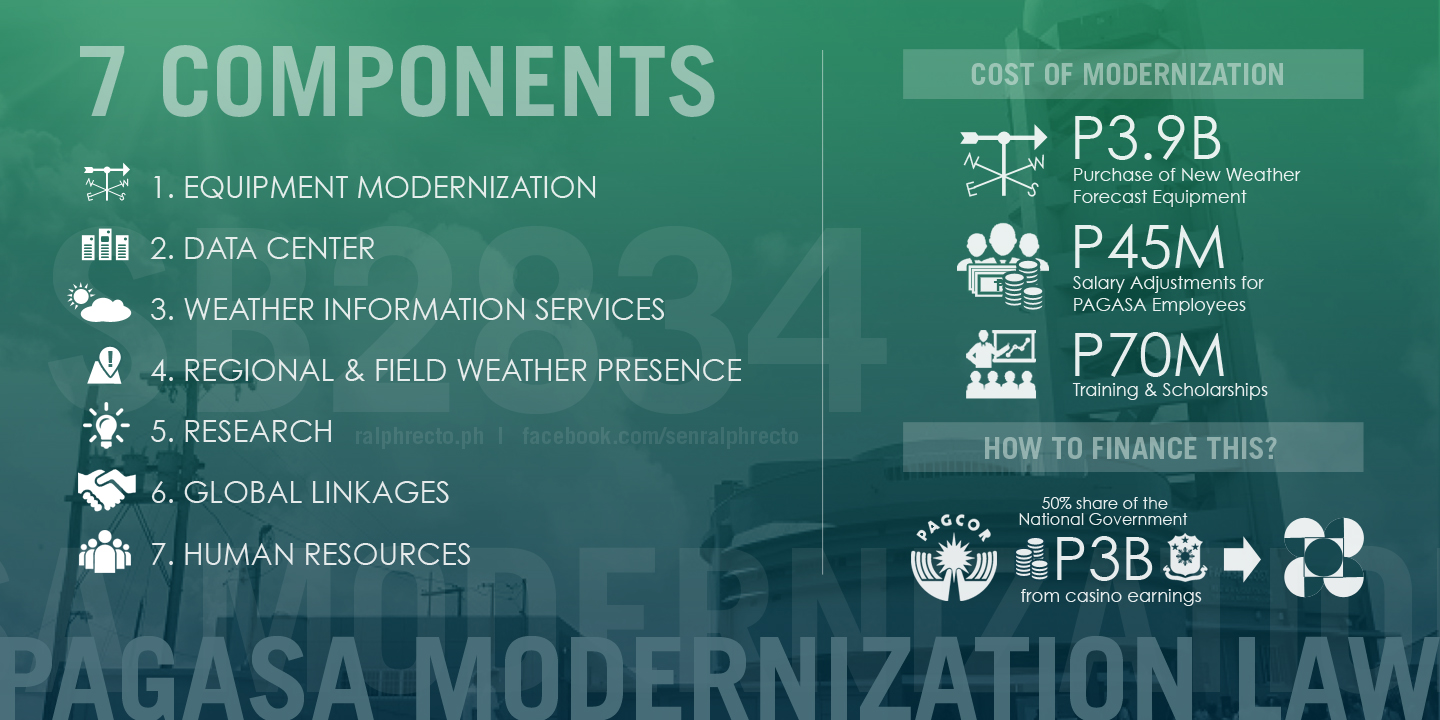PAGASA equipment budget to drop 86.2%, unless modernization bill becomes law
Budget for new Philippine Atmospheric, Geophysical and Astronomical Services Administration (PAGASA) equipment will plunge to P343.66 million in 2016 or an 86.2 percent drop from this year’s P2.48 billion capital outlay, “unless the PAGASA Modernization Bill, which authorizes equipment upgrade to as much as P3 billion, becomes law,” Senate President Pro-Tempore Ralph G. Recto said today.
Principal author Recto said the bill, “a needed shot in the arm in the 150-year-old weather bureau,” has been transmitted to Malacañang “for the President’s kind consideration.”
The bill passed on third reading at the House of Representatives on May 26, 2014, while the Senate version was approved on August 17, 2015.
So there will be no need for the two chambers to meet in conference to reconcile disagreeing provisions, the House, in plenary, merely adopted the Senate version last August 25, 2015.
Recto lamented that “PAGASA’s proposed capital outlay budget for next year is indeed a steep drop from the P2.48 billion for new equipment it is getting this year.”
“But this won’t happen if the PAGASA bill is signed into law. ‘Yan ang pag-asa ng PAGASA. I am confident that the President will do so. So my forecast is that good news is on the horizon,” the senator said.
Recto said extreme weather disturbances like Typhoon Lando and the projected dry spell caused by El Niño underscored the need for a modernized PAGASA.
“It’s one app the country must have in this era of climate change,” Recto said.
The modernization of PAGASA remains a “missing link” in the country’s climate adaptation efforts, he stressed. “There can be no climate change adaptation without weather bureau modernization.”
Recto said the bill sent to Malacañang seeks to set aside funds that can reach P3 billion to enable the weather bureau to deliver “reliable, timely, localized” forecast.
The bill supports PAGASA’s seven modernization components: equipment and operational techniques, data center, information services, human resources, regional and field weather presence, research and global linkages.
“A key component,” Recto explained, “is for PAGASA to go local by deploying weather equipment and personnel in as many areas in the country as possible.”
To discourage PAGASA personnel from “leaving the Philippine area of responsibility” for higher pay abroad, the bill authorizes a “package of personnel retention schemes,” Recto said.
The bill also authorizes salary and other compensation adjustments and funding for training and scholarships.
According to Recto, the “ferocious, fickle and frequent storms” caused by climate change call for “a strengthened weather agency which can warn and guide the public on how to respond to threats to lives and properties.”
Recto said a parade of cyclones from 2004 to 2014 left 14,150 dead, 46,691 injured, 4,169 missing; damaged 5.5 million houses and destroyed P338 billion worth of properties.
Many studies, he said, have tagged the Philippines as “the second most disaster-prone country in the world”
“But even without the Philippines sitting on the typhoon belt, a modern weather bureau is still needed because human activities are weather-dependent, so we need a dependable weather service,” he stressed.


